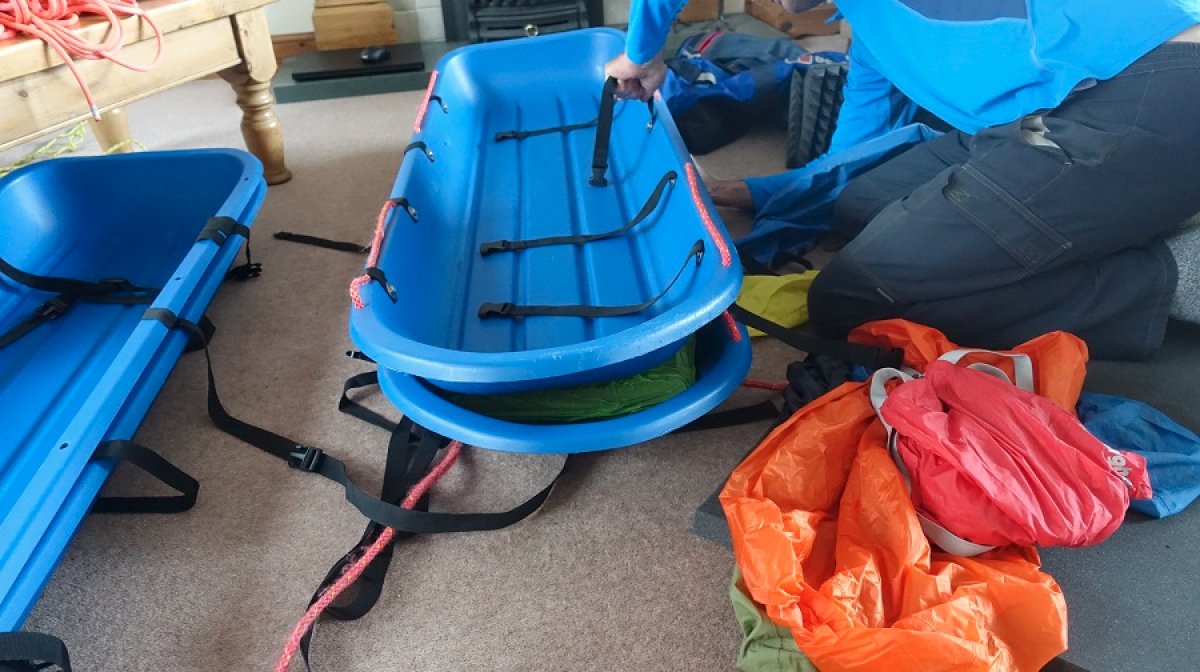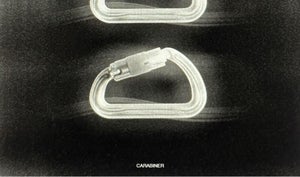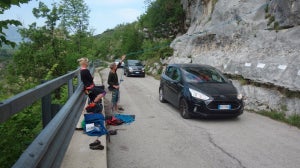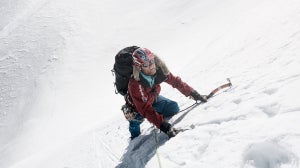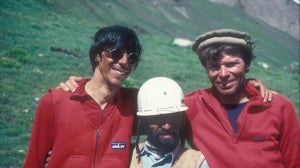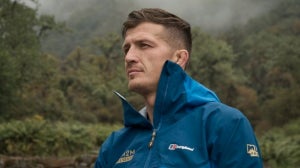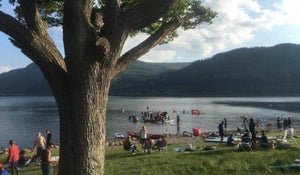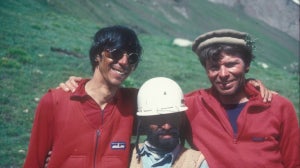
Date 19/05
Day 14
Location N 76 4.53 W 054 16.35
Distance (day/total) 125/679 miles
Weather Cloudy with the odd whiteout, moderate winds
Wind 10-15mph Temp -7c
So after a day of rest (due to no wind) it was action stations early on, and with the Chrono’s still sporting their 65 metre lines, we set off. Km after km of nothing to see, more cloud, more whiteout. It was Leo’s turn to feel motion sickness while out in front navigating the route. I was nursing my old man’s knees from behind and it was quite pleasant to have an object to focus on in front. For the last week we have both commented on how we think we are always traversing slightly downwards on a slope dropping in from the left.
It looks like the slope has a gradient of about 10%, but every time we check our altitude we are always at about the same height. This puzzle was solved the other day when we realised that when we edge hard with our skis against the pull of the kite we are sometimes more than 45 degrees lent over. After hours of this in a whiteout our brain’s pretend we are upright and tilt the small patch of visible ground that we see to the left, thus giving the optical illusion we are on a slope.
200 km was our distance today in about 11 hours, we are making good progress when the wind is out to play, but it is still a bit on and off, about 400 km to go.
Although our expedition is equipped with state of the art systems for polar snowkite travel we wanted to try and push the boundaries and innovate, so here is the description of our pulk suspension system we have brought with us:
We have been very fortunate to be able to draw on the experience and expertise of some of the World’s greatest polar snowkiters. We question them for hours and listen intently for their little nuggets of information that hold the key to making the trip a success. Years of sharing information among the snowkiting community has enabled the activity to evolve relatively quickly. Most of the decision making when planning a trip like this is about deciding on which of the many suitable compromises to choose; everyone has their favourites and all will tell you that they think their chosen preference is the best.
But one thing had been highlighted in the research of previous trips that been a continuing unsolved problem. Because kites can pull pulks at speeds of 50 km/h or more the equipment and supplies inside get quite a shaking. In fact it can become a serious problem, with fuel bottles leaking, food containers splitting, sharp metal objects like stoves making holes in tents, sleeping bags and kites. The Pringles turn to dust and the nuts don’t just turn to powder, they transform all the way through to an oil…
So we spent some time thinking about a suitable packing system that would alleviate the destruction as far as we could. Should we wrap all the hard objects in protected foam bags? Should we separate the soft stuff from the hard stuff, the heavy from the light? The answer was: yes, but was there anything else we could do?
A wet Wednesday afternoon and getting ready for my post-lunch nap (eating food when you are over 50 makes you tired). I had the pulks out on the lounge floor and my mind was thinking about custard as a non-Newtonian fluid and how amazing it was. A kind of dynamic shock absorbing system. It then occurred to me that instead of trying to insulate each individual item in the pulk from vibration, why don’t we just insulate the top pulk from the vibration of the bottom pulk. Custard would be daft, but foam would be excellent as it is light, cheap, flexible and workable.
So a selection of foam was purchased, and tests were done with different density layers to come up with the optimal shock absorbing characteristics – a soft layer to absorb the high frequency vibrations of hard ice, a pyramidal layer to dampen any lateral movement and a firm dense layer to take the final blows out of any hard impacts. The tests mainly consisted of me sat in the pulks jiggling around until it felt about right – no science was conducted – a good engineer always knows when it is about right…
And it was while conducting one of these tests that my sister visited and delivered what was without doubt the most useful thing she has ever said to me in my whole life: “oh, if you want to cut foam straight, you need an electric carving knife”.
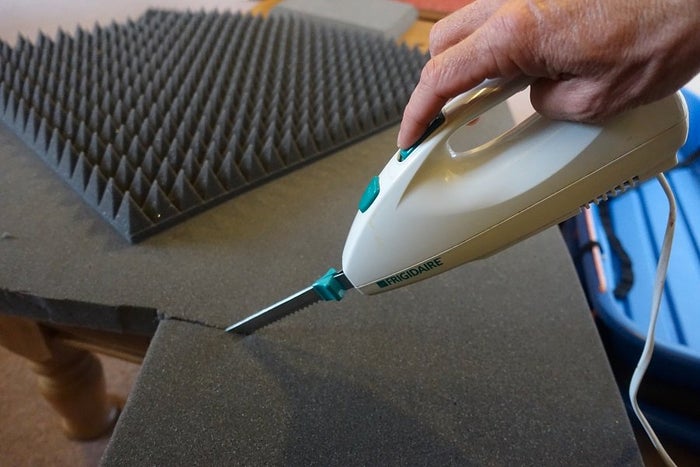
Dodgy cutting with the scissors on the left and clean straight easy cutting with an electric carving knife on the right
The pulks have the foam sandwich between them and are then stitched with rope to provide a guide for the suspension as well as a bump stop to prevent them flying apart due to a big impact. The gap between the pulks is susceptible to snow ingress but this will generally occur in soft snow conditions. In these conditions we will take the foam out and put it in the pulk bags thus reducing the gap to zero – we won’t need the suspension in soft snow as it is, well, soft.

We feel we might have developed something quite good with this system, and we might even consider ourselves innovators but if the system is deemed useless and a failure then at least we will be the first, and possibly only, polar snowkite team that carried 12 tent scatter cushions with them.

